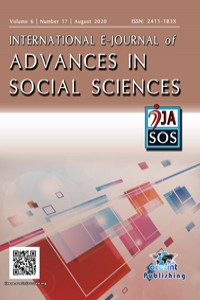Abstract
References
- Idem, (2003), Cronicul de la 1648-1704 în Constantin Erbiceanu, Cronicari greci care au scris despre români în epoca fanariotă, Editura Cronicar, București.
Abstract
The Ruler School from Saint Sava Monastery, transformed into an Academy by the Phanariot ruler Alexander Ypsilanti in 1775, represented the first form of higher education in Wallachia. With a multitude of professors trained in Constantinople and Padua, the Academy grouped a significant number of students. The disciples came from the ranks of the boyars, but also students from outside the borders, who came to study. The sons of merchants had the right to follow the elementary cycle of study, then engaged in the practice of a trade.
From the year of foundation, 1679 and until 1821, the school went through numerous reforms. The ones on which I stopped more carefully are those belonging to Rulers Constantin Brâncoveanu and Alexander Ypsilanti. Some of the students benefited from scholarships, food and clothing. The program was very strict and well organized.
The age at which children could come to school was seven years. Most of the time was devoted to joint or individual study, neither prayer nor physical exercises were neglected.
Saint Sava was the favourable environment for the development of science-based education, the place of scholastic being increasingly restricted. In the syllabus here the philosophical disciplines, the positive sciences and the modern languages have found their place, which is why many of the professors from Constantinople have taught in Wallachia.
References
- Idem, (2003), Cronicul de la 1648-1704 în Constantin Erbiceanu, Cronicari greci care au scris despre români în epoca fanariotă, Editura Cronicar, București.
Details
| Primary Language | English |
|---|---|
| Journal Section | Articles |
| Authors | |
| Publication Date | September 14, 2020 |
| Submission Date | June 8, 2020 |
| Published in Issue | Year 2020Volume: 6 Issue: 17 |
Contact: ijasosjournal@hotmail.com
The IJASOS Journal's site and its metadata are licensed under CC BY
Published and Sponsored by OCERINT International © 2015- 2025


